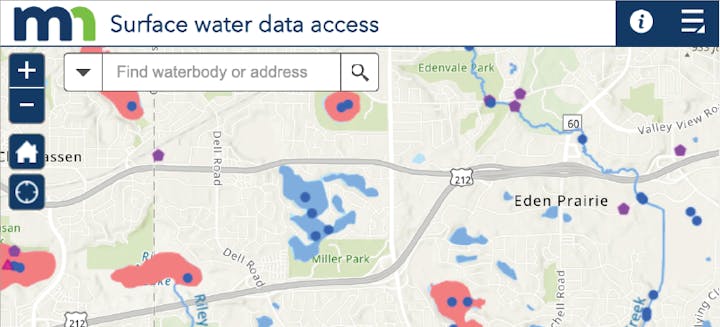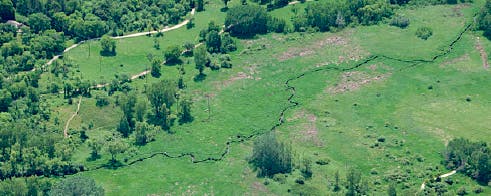Purgatory Creek
Purgatory Creek has three headwaters: Lotus Lake in Chanhassen, Silver Lake in Shorewood, and wetlands in Minnetonka. After the three tributaries join, the creek flows through the Purgatory Recreation Area and Staring Lake before eventually reaching the Minnesota River.
Keeping Purgatory Creek healthy requires several tools and strategies. Conducting projects to stabilize streambanks and restore stretches of stream is one strategy. Cleaning and slowing rainwater runoff before it reaches the creek is another. Before either of these can be done, we need to understand how the creek is doing and where it needs the most help.
District staff have monitored Purgatory Creek since the 1980s. To assess creek health, staff developed a tool called the Creek Restoration Action Strategy (CRAS). CRAS uses water quality data, as well as information on erosion and habitat, to rank which creek stretches (sections) are doing the best and which are doing the poorest.
Stream Characteristics
| Length | 12 miles |
|---|---|
| Elevation Change | 178 ft |
| Watershed size | 30 sq miles |
| Number of cities in watershed | 4 |
| Number of lakes connected | 8 |
| Number of parks | 27 |
| Impairment listing | Not listed |
| Common fish | Bluegill, White Sucker, Black Crappie, Yellow Perch |
| Invasive species | Curlyleaf Pondweed, Eurasian Watermilfoil, Common Carp |
Stream Health
RPBCWD staff monitor streams at several sites. Purgatory Creek has eight monitoring sites. Data is collected at each of these sites to detemine if there's an impairment in the following categories:
- Total suspended solids
- Total phosphorus (nutrient)
- Macroinvertebrates (aquatic animals)
- Dissolved oxygen
- Fish species
- E. coli (bacteria)
For more information about waterbody impairments, visit the Minnesota's Impaired Waters List webpage managed by the Minnesota Pollution Control Agency.
Chloride: A Growing Concern
Chloride permenently pollutes our lakes, ponds, wetlands, and creeks. Chloride sources include winter de-icing salts, water softeners, and fertilizers all contribute to chloride pollution.
Visit the factsheets page to see the most recent stream water quality monitoring summaries.






